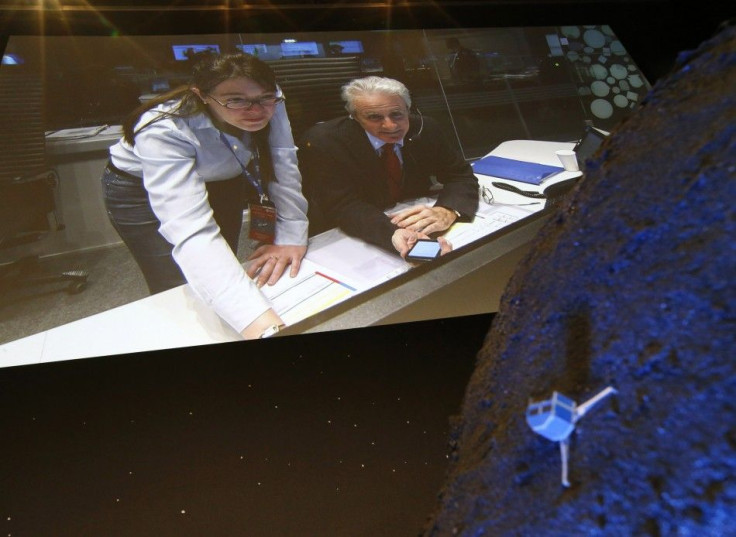Historic Philae Lander Still Missing After Battery Got Drained

The historic Philae lander, a robotic European Space Agency lander, had landed on the Comet 67P/ Churyumov-Gerasimenko, a comet from the Kuiper belt, on Nov. 12. It was sending back data when its battery drained, then it went silent. Before the battery died, the Philae had bounced twice.
The efforts to find the lander had failed and even after using the imaging search, there was no trace of the probe. The scientists have said that they were waiting for the Philae lander to garner enough energy, so that it could reveal its position. The lighting conditions for the historic Philae lander would improve when the comet 67P/ Churyumov-Gerasimenko would move closer to the Sun. This would allow the solar cells of the lander to recharge the drained battery.
Researchers from the European Space Agency, an inter-governmental agency that is dedicated to the purpose of exploration of space, have an idea of where the Philae lander could be, but they weren't sure of the exact location, reported BBC News. The scientists were confident that they will make the location of the lander known soon though, at present, they were unable to locate it.
From the pictures that it sent just before the battery drained, it was clear that the philae was right at the top of the "head" of the comet. Through the images captured by the Rosetta satellite on 12, 13 and 14 Dec., the researchers from ESA looked for bright pixels which they believed could be the Philae lander. The Rosetta satellite has moved a little further away from the comet, from 20 kilometres to 30 kilometres. Since there were no plans of it going back down, it was not possible to photograph the likely location of the Philae lander.
The latest assessment that was done by the researchers suggested that the communication with the lander had a chance of being re-established in the timeframe between May and June. It also suggested that the lander would distribute enough electricity so that the operations of the lander could be resumed around the month of September.
Contact the writer: afza.kandrikar@gmail.com




















